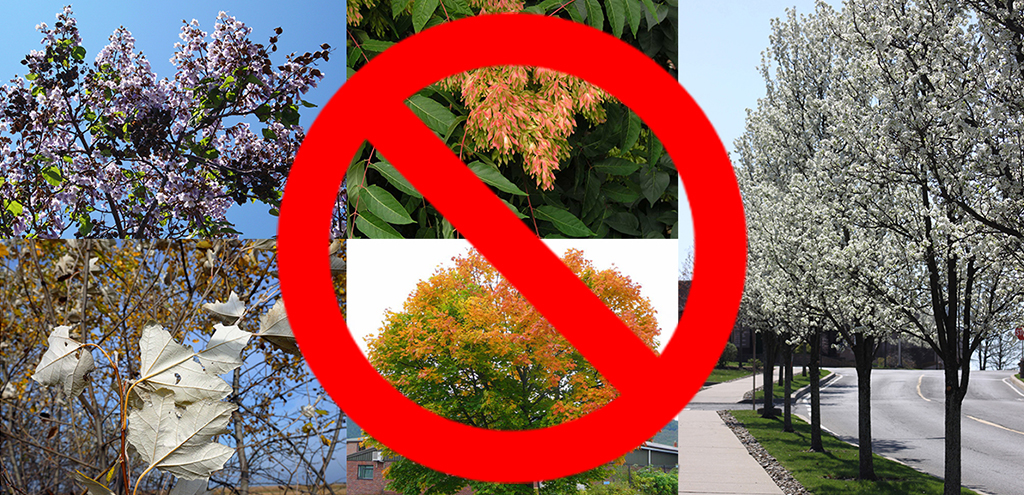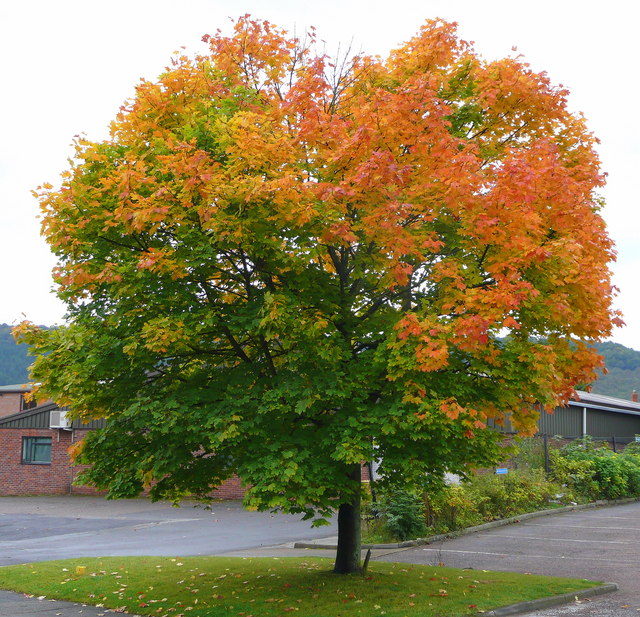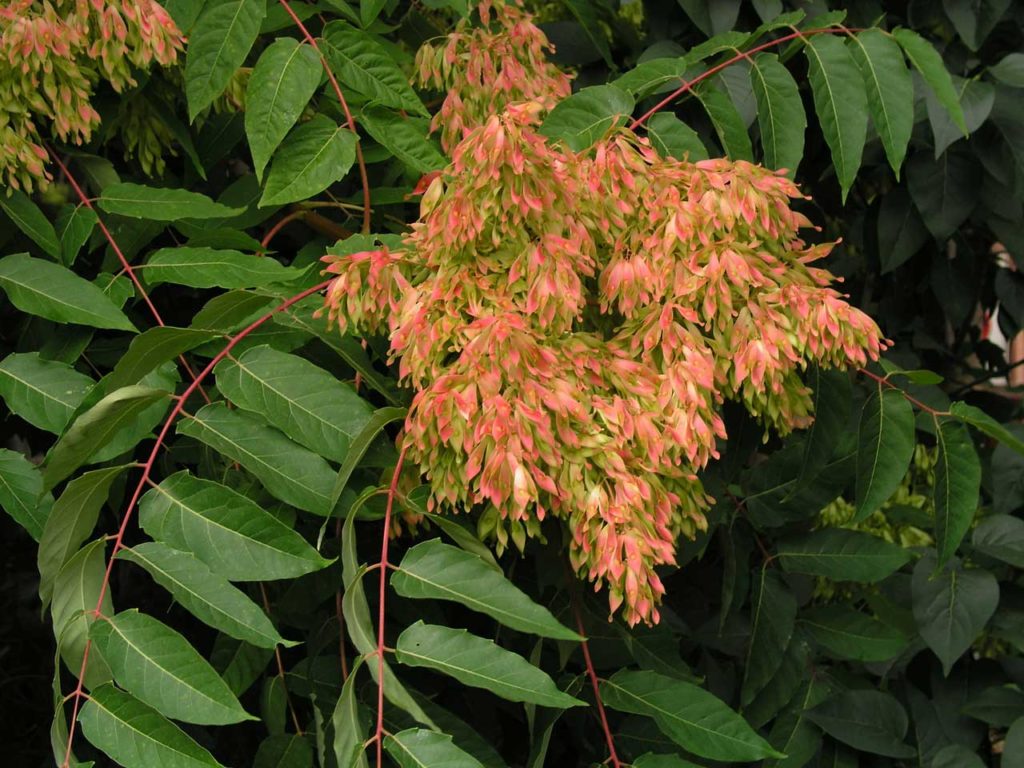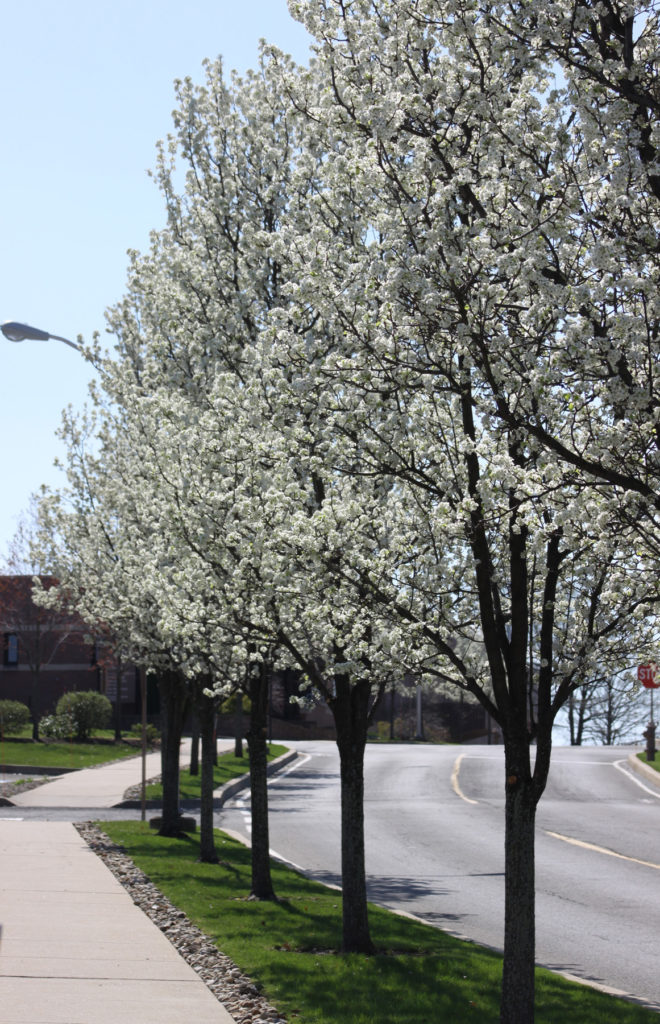THE LEAFLET

Trees You May Have, But Shouldn’t
A large number of these species have been introduced from other regions and are considered invasive. A few are native to North America but have started to grow outside their natural range.
In other words, not every tree you plant or encourage to grow is desirable and can actually be harmful to a particular location. If you see a non-native tree species that is out of its original biological community and whose introduction causes or is likely to cause economic or environmental harm, you have an invasive tree. Interestingly, humans actions are the primary means of introducing and spreading these invasive species.
“While not all non-native plants are bad, some imported species are bullies that crowd out native plants and damage the diverse ecosystems that many living things depend on,” said James Gagliardi, a horticulturist with Smithsonian Gardens.
 Norway Maple (Acer platanoides)
Norway Maple (Acer platanoides)
The plant explorer, (because yes, that is a thing) John Bartram first introduced the Norway maple to the United States from England in 1756. The widely adaptable tree quickly became popular and was planted in towns and rural communities as a shade tree. While these trees have demonstrated invasive traits, there is insufficient supporting research to declare them so pervasive that they cannot be recommended for any planting sites. Part of its original popularity is due to its tolerance of urban conditions, but it often becomes a weedy plant through self-seeding.
Plant this instead: Plenty of lovely, native maples to choose from including the sugar maple (Acer saccharum) and red maple (Acer rubrum).
 Tree-of-Heaven (Ailanthus altissima)
Tree-of-Heaven (Ailanthus altissima)
Tree of Heaven (Ailanthus altissima) is known by a number of names – stinking sumac, Chinese sumac, varnishtree and stinktree. No matter what you call it, it is no angel. The tree of heaven is a rapidly growing deciduous tree with pale gray bark, light brown twigs and large pinnately compound leaves. It is native to China and was brought to the United States in 1784 as a horticultural specimen and shade tree by a Philadelphia gardener. Its ease of establishment, rapid growth and absence of insect or disease problems made it popular when planning urban landscaping. Much like the above Norway maple, the tree rapidly spread thanks to its ability to grow quickly under adverse conditions (not to mention that it produces a poisonous chemical which kills nearby vegetation and helps limit its competition). It is a prolific seed producer and can thrive in even the most unfavorable conditions with little management.
Plant this instead: The Kentucky coffeetree (Gymnocladus dioicus), is also tolerant of urban conditions. The Yellowood (Cladrastis kentukea) offers attractive seed pods and flowers as well.
First introduced to North America in 1748 from Eurasia, the white poplar has a long history of cultivation. It is chiefly planted as an ornamental for its attractive leaves, but has escaped and is now found in forty-three states throughout the contiguous U.S. White poplars out-compete many native tree and shrub species in mostly sunny areas such as forest edges and fields, and interfere with the normal progress of natural community succession. It is an especially strong competitor because it can grow in a variety of soils, produce large seed crops, and re-sprouts easily in response to damage.
Plant this instead: silver birch (Betula pendula), which is often mistaken for white poplar.
Royal Paulownia or Princess Tree (Paulownia tomentosa)
Royal paulownia or Paulownia tomentosa was introduced into the U.S. from China as an ornamental and landscape tree around 1840. Paulownia has a rounded crown, heavy, clumsy branches, reaches 50 feet tall, and the trunk can be 2 feet in diameter. The tree is now found in 25 states in the eastern U.S., from Maine to Texas. Princess trees are an aggressive ornamental tree that grows rapidly in disturbed natural areas, including forests, stream banks, and steep rocky slopes. It easily adapts to disturbed habitats, including previously burned areas and forests defoliated by pests (like gypsy moth). Its genus name honors Princess Anna Paulowna (1795-1865), daughter of Czar Paul I of Russia.
Plant this instead: Catalpas (Catalpa speciosa) are equally tall trees with showy flowers and large heart-shaped leaves. A Carolina Silverbell (Halesia tetraptera) is another, slightly smaller, option.
 Bradford Pear (Pyrus calleryana)
Bradford Pear (Pyrus calleryana)
While many of these invasive trees have been around for a while, the Bradford pear is a relatively recent addition. It was first introduced in the 1960s by the U.S. Department of Agriculture as an early blooming landscape tree.
Today, the Bradford pear may be the most despised tree in this part of the world. Its wood splits easily, making extra work for utility and public works crews. Its offspring pop up unbidden in forests and parks. Its blossoms are fragrant — but not in a good way. The Bradford pear has been called a “scourge,” a “weed” and a “monster.” Short-lived and dangerous, the tree that was planted all over suburbia is no longer welcome.
Plant this instead: Pretty much any other flowering landscape tree, but the eastern redbud (Cercis canadensis), serviceberry (Amelanchier sp.), or flowering dogwood (Cornus florida) offer some particularly beautiful blooms.
Think you may have one of these on or around your property? Don’t fret or grab the chainsaw just yet. If you find invasive species on your property, it is up to you to decide what to do. You can leave them alone, or you might want to try and eradicate or control them. This may or may not be possible depending on the extent of the problem and whether your neighbors all around you have the species on their land as well. A consultation with a Certified Arborist is your best bet. Want to help control the spread of invasives? We have plenty of classes for that and need all the help we can get fighting the good fight.

